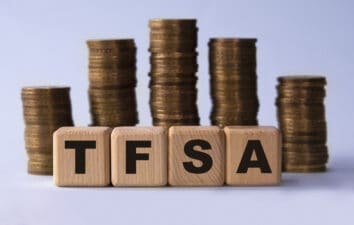Investing in popular coffee stocks such as Starbucks (NASDAQ:SBUX) has allowed investors to derive game-changing returns in the last two decades. For instance, a $1,000 investment in Starbucks stock 20 years ago would be worth over $4,000 today. After adjusting for dividends, cumulative returns would be higher at $5,150.
While Starbucks is a household name in several global markets, Canada’s Tim Hortons brand is fast gaining traction in this segment. The parent company of Tim Hortons is Restaurant Brands International (TSX:QSR), which also owns fast-food chains such as Burger King and Popeyes.
Let’s see which stock between Starbucks and QSR is a better buy right now.
Is Starbucks stock undervalued?
Valued at a market cap of US$86 billion, Starbucks stock trades 40% below all-time highs, allowing you to buy a quality company at a lower multiple. Shares of the coffee chain remained under pressure following its fiscal second quarter (Q2) of 2024 (ended in March) results.
In fiscal Q2, Starbucks reported revenue of US$8.56 billion and adjusted earnings of US$0.68 per share. Comparatively, analysts forecast revenue of US$9.13 billion and earnings of US$0.79 per share in Q2.
Starbucks’s top line fell 2% year over year as same-store sales declined by 3%. Moreover, sales from China and the U.S. were also down 11% and 3%, respectively, in the March quarter. These two regions are Starbucks’s largest in terms of revenue, which may be a cause for concern. As operating expenses remained flat compared to the same period last year, Starbucks saw a decline of over 17% in its operating income.
However, investors should understand that Starbucks’s growth story is far from over. The company aims to end 2030 with 55,000 stores, up from its current count of 38,951. Despite falling sales in Q2, Starbucks grew its loyalty membership by 6% in the U.S., while its mobile app offers customers convenience and provides the company with an alternate marketing channel.
The drawdown in SBUX stock has increased its forward dividend yield to 3%. It currently pays shareholders an annual dividend of US$2.28 per share, and these payouts have risen by 17.5% annually since 2011.
Priced at 21 times forward earnings, SBUX stock is quite cheap and trades at a discount of 19% to consensus price target estimates.
Restaurant Brands International stock
Valued at $44 billion by market cap, Restaurant Brands International has almost tripled investor returns since its initial public offering in late 2014 if we account for dividend reinvestments. Despite its outsized gains, QSR stock also offers you a forward yield of 3.3%.
While several restaurant stocks have underperformed the markets in 2024 due to lower consumer spending patterns, QSR saw its system-wide sales rise by 8.1% year over year in Q1 of 2024. It reported an operating income of $544 million in Q1, compared to $447 million in the year-ago period.
QSR continues to expand its brand portfolio and announced the acquisition of Carrols Restaurant Group for an enterprise value of $1 billion. The acquisition will be completed by the end of Q2 and should be accretive to revenue and earnings.
QSR’s focus on expansion should help the company grow system-wide sales by 8% through 2028. Priced at 20.6 times forward earnings, QSR stock trades at a discount of 20% to consensus estimates. Both Starbucks and QSR can be part of your equity portfolio in 2024, offering you exposure to two blue-chip stocks that pay a tasty dividend yield.







